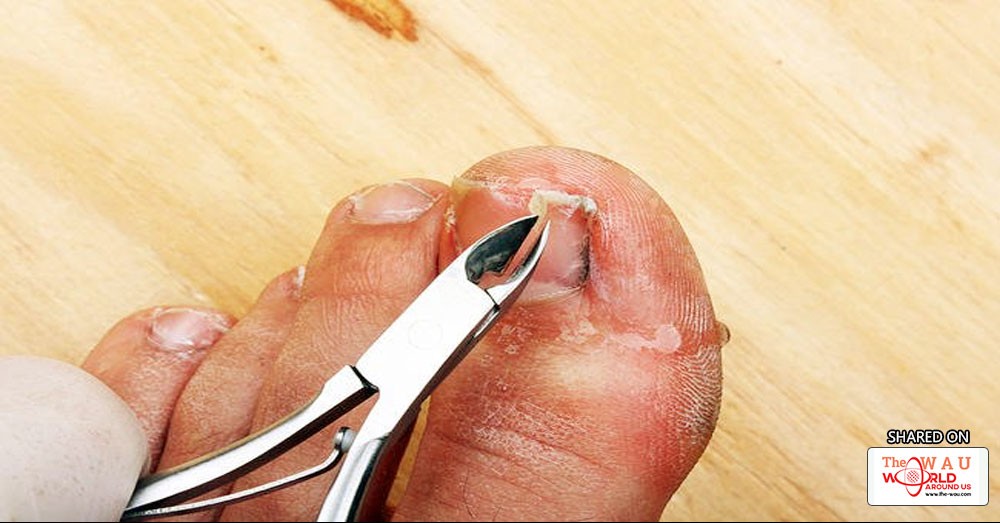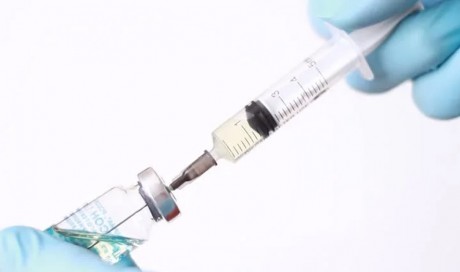Take a look down at your feet. Are your talons growing out of control?
Chances are, you don’t give much thought to when it’s time to get out the clippers. And when you do, well, you probably just start clipping away. But if you don’t cut your nails the right way, you might be setting yourself up for a whole bunch of issues—some of which can be pretty painful. (Here's how to fix your grossest feet problems.)
Here, what you need to know about clipping your toenails—and the best tools and techniques to make the process a breeze.
WHAT ARE THE BEST TOOLS TO CUT YOUR TOENAILS?
It may seem extravagant, but you should have two pairs of clippers in your medicine cabinet: one for hands and one for toes. We like this set from Tweezerman, which contains one kind of clipper for each.
Toenail clippers are larger, both in width and thickness, than your typical fingernail clippers, which allows you to make smoother cuts, says Christopher R. Hood Jr., D.P.M., of Premier Orthopedics and Sports Medicine in Pottstown, Penn.
Plus, having specified tools for both body regions can be protective, too.
“Use your toenail clippers just for your toes, and use the smaller clipper for your fingernails to not transmit foot fungus or bacteria to your fingernails, or vice versa,” says Dr. Hood.
And make sure to clean your clippers after each use. “This can be as easy as soaking in dish detergent or anti-bacterial soap with warm/hot water for 10 to 15 minutes, and then drying afterwards so they do not become rusty,” he says.
HOW OFTEN SHOULD YOU CUT YOUR TOENAILS?
Your toenails don’t grow as fast as your fingernails do, so you may not have to clip them as frequently.
“In general, fingernails grow at a rate of 2 to 3 millimeters (mm) a month, while
toenails grow 1 to 2 millimeters a month, says Dr. Hood. “[Clipping] about every 6 to 8 weeks would be the most appropriate timeframe.”
If you're super active, you may not want to wait as long between trims, though.
“Athletes, particularly runners, should trim more often. Pressure of a longer nail in a sneaker while training can cause painful subungual hemorrhage, or bleeding beneath the nail, which will ultimately result in the nail falling off,” says Ellie Nasser, D.P.M., a podiatry associate in the department of orthopedics at Geisinger Health System.
SO HOW SHOULD YOU CUT YOUR TOENAILS?
First, you need to determine when exactly you should start clipping—before or after your shower?
You’ve probably heard never to clip your fingernails after a shower, but there is a little wiggle room with your toenails. And it all depends on how thick your nails are.
"For very thick nails, it may be easier to cut them after soaking or after a warm, steamy shower," says Jeffrey D. Lehrman, D.P.M., of Crozer-Keystone Health System.
But if your toenails are normal thickness, do it before your shower.
“When they are wet or soft, the nail tends to crush, tear, or bend when you cut it versus creating a clean, smooth cut when trimming a dry nail,” says Dr. Hood.
Then, it’s time to get clipping: It may seem pretty basic, but there are a few rules you should remember when getting started.
First, the most basic rule for toenail clipping is to cut them straight across.
"Start with the cutting device 1 to 2 mm off the nail on the side—a corner starting point—so that you create a good straight edge. Then you can remove the other side of the nail with a secondary cut," says Dr. Hood.
So why the straight cut? That’s because it’s the best way to ward off ingrown toenails, a painful condition where the side of your nail grows into your skin, causing redness, swelling, or even infection. It prevents nail irritation and inflammation, too.
“If you start to cut down the side, a “slant-back” as we would call it, you run the risk of altering future growth of the nail and inciting an ingrown toenail,” he says.
HOW SHORT SHOULD YOU CUT YOUR TOENAILS?
Here’s a rule of thumb: “You should be able to get your fingernail under the sides and ends of the nail,” says Dr. Nasser. “Trimming the nails too short can increase the risk for ingrown toenails.” Shoot for about 1 to 2 mm at the end of the nail.
Keeping your toenails too long can lead to some pretty gruesome injuries, too.
“We see nail injuries that result from the nail being too long and it gets caught on something like a sock and part or all of the nail gets torn off,” says Dr. Lehrman.
But when it comes to your cuticles, leave them alone.
“They act as a barrier against infection getting into your skin,” says Dr. Hood. Messing with them can result in bleeding and infection.
Share This Post















